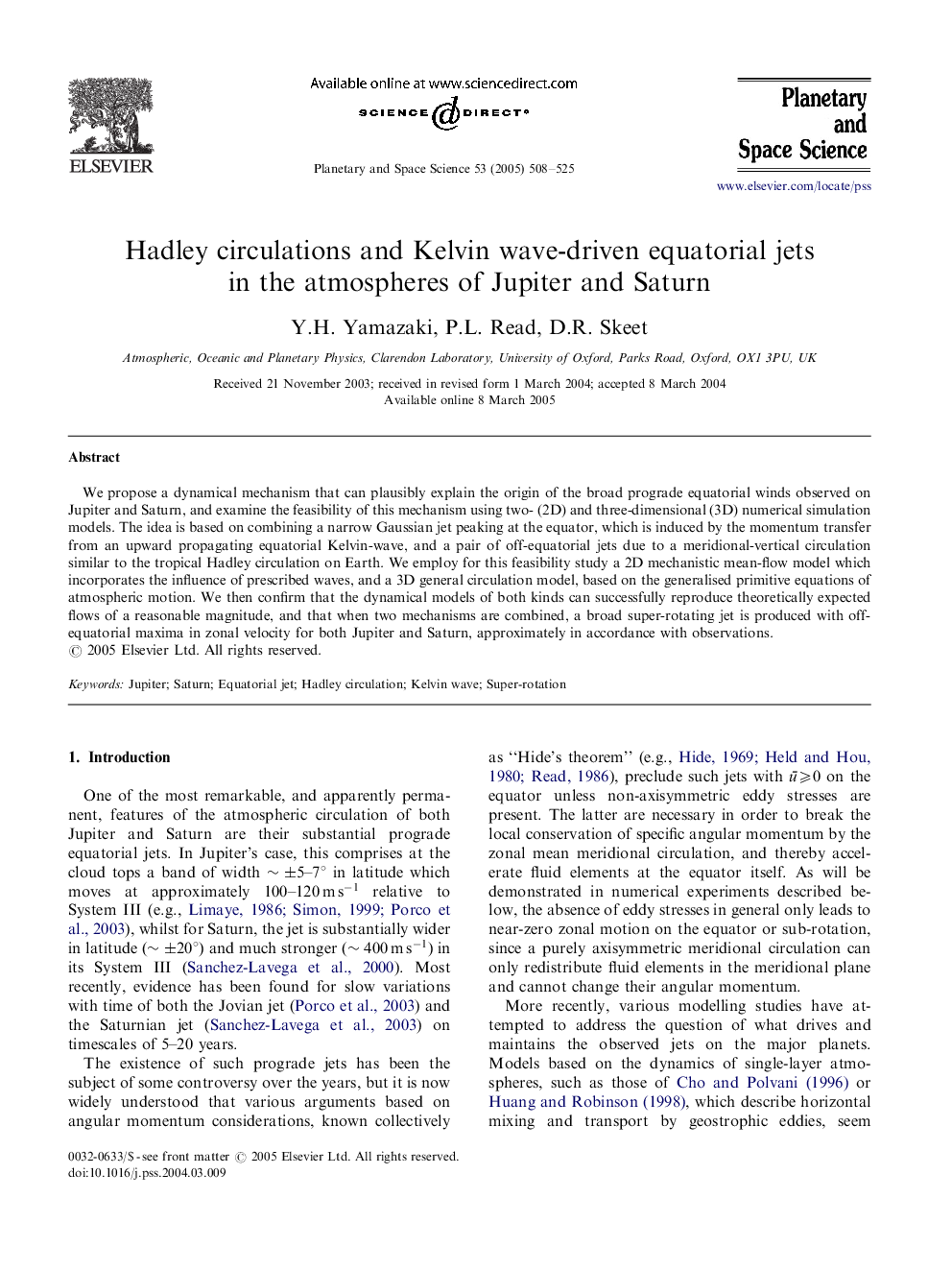| Article ID | Journal | Published Year | Pages | File Type |
|---|---|---|---|---|
| 10705363 | Planetary and Space Science | 2005 | 18 Pages |
Abstract
We propose a dynamical mechanism that can plausibly explain the origin of the broad prograde equatorial winds observed on Jupiter and Saturn, and examine the feasibility of this mechanism using two- (2D) and three-dimensional (3D) numerical simulation models. The idea is based on combining a narrow Gaussian jet peaking at the equator, which is induced by the momentum transfer from an upward propagating equatorial Kelvin-wave, and a pair of off-equatorial jets due to a meridional-vertical circulation similar to the tropical Hadley circulation on Earth. We employ for this feasibility study a 2D mechanistic mean-flow model which incorporates the influence of prescribed waves, and a 3D general circulation model, based on the generalised primitive equations of atmospheric motion. We then confirm that the dynamical models of both kinds can successfully reproduce theoretically expected flows of a reasonable magnitude, and that when two mechanisms are combined, a broad super-rotating jet is produced with off-equatorial maxima in zonal velocity for both Jupiter and Saturn, approximately in accordance with observations.
Related Topics
Physical Sciences and Engineering
Earth and Planetary Sciences
Geophysics
Authors
Y.H. Yamazaki, P.L. Read, D.R. Skeet,
